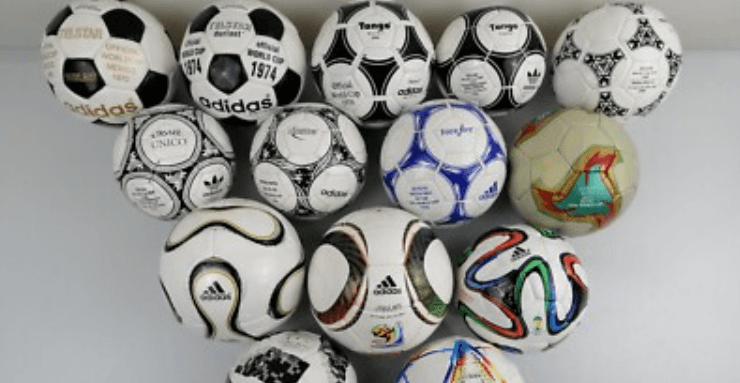Bulk Sports Balls Manufacturing and Market Insights

Introduction to the Manufacturing Industry
The sports equipment industry is one of the most rapidly growing sectors worldwide, driven by the increasing interest in fitness, recreational activities, and professional sports. Within this industry, bulk sports balls hold a crucial role as they serve schools, academies, clubs, retailers, and corporate buyers. The demand for large quantities not only supports competitive sports but also provides affordable solutions for training and community programs. Understanding the manufacturing process, material selection, and market trends is essential for businesses that want to succeed in this space.
Understanding Bulk Sports Balls
Bulk sports balls refer to large-scale production and distribution of balls used in different sports such as football, basketball, volleyball, tennis, cricket, and baseball. When ordered in bulk, these products cater to institutions rather than individuals. Schools, gyms, wholesalers, and retailers often purchase them in higher volumes to reduce costs and maintain supply consistency.
Materials Used in Manufacturing
The choice of materials defines the durability, performance, and pricing of sports balls. Common materials include synthetic leather, rubber, polyurethane, and composite blends. For high-performance games, advanced synthetic covers are used to ensure grip and long-lasting performance. On the other hand, rubber-based options are widely preferred for training and practice purposes due to affordability.
Manufacturing Process of Sports Balls
The production process of bulk sports balls involves several key stages:
- Design and Molding – Manufacturers create molds for different sizes depending on international standards.
- Material Preparation – Rubber or synthetic materials are shaped into panels and prepared for assembly.
- Stitching or Bonding – Panels are either hand-stitched or thermally bonded to form a spherical shape.
- Bladder Insertion – A latex or butyl bladder is inserted to maintain shape and air retention.
- Quality Testing – Finished balls undergo durability, bounce, and pressure tests before shipment.
This process varies depending on the type of sport and quality grade required.
See also: Age Verification in Florida: Navigating New Laws and Technologies in 2025
Advantages of Ordering in Bulk
Purchasing sports balls in large volumes provides several benefits for buyers and institutions.
- Cost Efficiency – Bulk purchases reduce the per-unit price, making it affordable for schools and clubs.
- Consistent Supply – Teams and organizations ensure they have a steady supply for training and matches.
- Customization Opportunities – Large orders often allow buyers to request branding or logo printing.
- Uniformity in Training – Using identical equipment improves consistency during practice sessions.
Applications in Sports and Training
Bulk sports balls are widely used across multiple settings. Schools rely on them to support physical education programs, while professional academies need large quantities for daily practice. Retail stores stock them for consumer bulk sports balls demand, and event organizers purchase them for tournaments. In addition, recreational centers and corporate wellness programs often invest in bulk quantities to engage participants in regular sports activities.
Global Market Trends
The demand for sports equipment is steadily increasing worldwide. Key market drivers include:
- Rising awareness about health and fitness
- Growth of organized sports leagues and community programs
- Expansion of e-commerce platforms that simplify bulk purchases
- Increased sponsorship and investment in sports infrastructure
Asian countries, particularly China, India, and Pakistan, are leading producers of bulk sports balls due to cost advantages and skilled labor availability. Meanwhile, North America and Europe represent major consumer markets.
Quality Standards and Certifications
Manufacturers must adhere to strict international standards such as FIFA, FIBA, or ITF approvals depending on the sport. Meeting these certifications assures buyers of durability, proper bounce, and overall safety. Bulk orders, especially for tournaments and institutions, often demand certified products to maintain credibility.
Sustainability in Production
The sports industry is also shifting toward sustainable practices. Recyclable materials, eco-friendly adhesives, and ethical labor policies are becoming part of the production chain. Buyers increasingly prefer suppliers who commit to environmental responsibility while delivering bulk sports balls at competitive prices.
Choosing the Right Supplier
Selecting a reliable manufacturer is crucial for businesses and institutions. Important considerations include:
- Product quality and certifications
- Pricing and discounts on bulk orders
- Lead time and delivery capabilities
- Ability to offer customization and branding
- After-sales support and warranty policies
A strong supplier relationship ensures consistent quality and timely delivery, reducing operational challenges for buyers.
Future of Bulk Sports Balls Industry
As global participation in sports continues to rise, the bulk sports balls industry is expected to expand further. Digital platforms are creating opportunities for small and large buyers to connect directly with manufacturers. Moreover, advancements in materials, automation in stitching, and eco-friendly innovations are shaping the future of production.
Conclusion
The manufacturing and distribution of bulk sports balls represent a vital segment of the sports industry. From schools and academies to global retailers, the demand for affordable, durable, and standardized sports equipment continues to grow. Manufacturers that focus on quality, sustainability, and innovation are well-positioned to capture this expanding market. With rising global interest in sports and fitness, the industry is set to thrive, offering opportunities for both producers and buyers.

